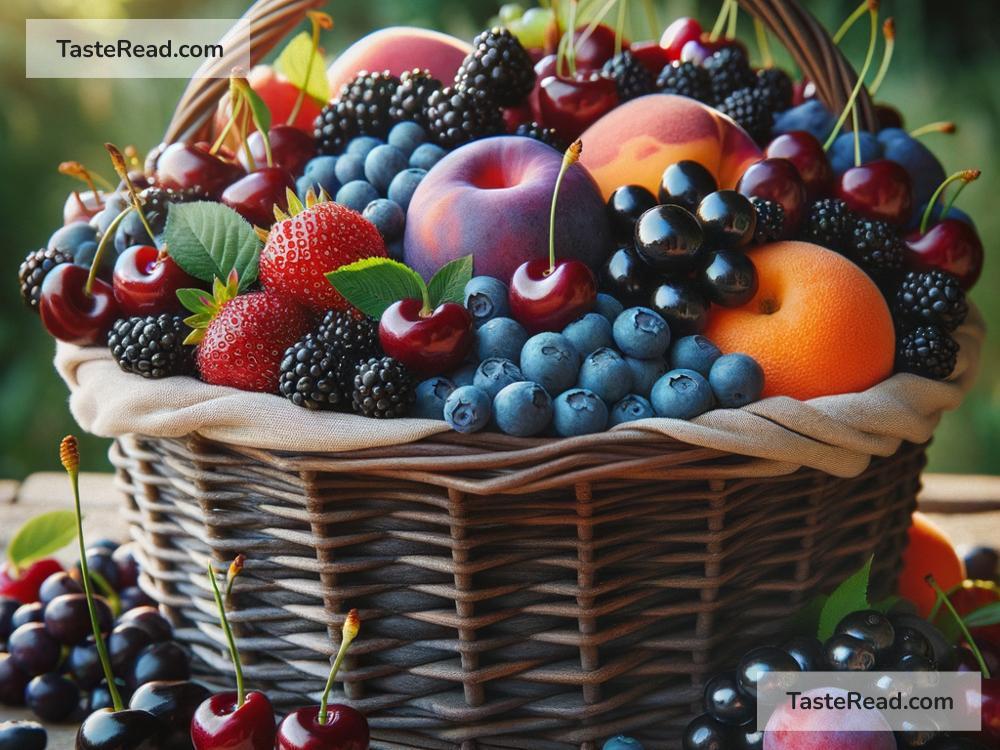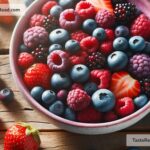The Role of Anthocyanins in Fruit Color and Taste
Fruits are not only tasty snacks but also a feast for the eyes. Have you ever wondered why some fruits are bright red, deep purple, or even blue? The answer lies in a natural compound called anthocyanin. While it may sound like a complicated word, anthocyanins are simply pigments found in plants that are responsible for giving fruits, vegetables, and even flowers their vibrant colors. But that’s not all—these tiny compounds also play an important role in the taste of fruits and offer health benefits!
What Are Anthocyanins?
Anthocyanins belong to a group of plant compounds called flavonoids, which are a type of antioxidant. Antioxidants help protect plants from damage caused by sunlight, diseases, and other environmental stressors. For humans, antioxidants like anthocyanins can also have health benefits, such as reducing inflammation and fighting free radicals in the body.
One place you’ll find anthocyanins is in the skins of colorful fruits like berries, grapes, cherries, and plums. They are water-soluble, which means they dissolve in water and can move around within the fruit. Anthocyanins are responsible for red, blue, and purple hues, depending on the fruit and the acidity (pH) of its environment. For instance, they appear red in acidic conditions, purple in neutral conditions, and blue in alkaline conditions.
How Do Anthocyanins Affect Fruit Color?
Imagine strolling through a garden or fruit market and seeing a rainbow of colorful fruits. Those vibrant colors are nature’s way of attracting animals and humans to eat the fruits. This is important for plants because when animals eat the fruit, they often carry the seeds to new places and help to grow more plants.
Anthocyanins are one of the driving forces behind these eye-catching colors. For example:
- Strawberries and cherries are red because of high levels of anthocyanins combined with acidic conditions.
- Blueberries have a dark blue hue because their anthocyanins exist in a more alkaline or neutral environment.
- Blackberries look dark purple or almost black due to a mix of anthocyanins and other pigments.
The amount of anthocyanin in a fruit—and its interaction with other compounds—affects how bright or dull the color appears. Some fruits, like apples, don’t have as much anthocyanin unless they are varieties that develop a red blush on their skins.
Farmers and food scientists even pay attention to anthocyanins when breeding fruits because vibrant colors tend to attract customers. A bright red apple or deep purple grape often looks fresher and more appealing than a pale one. That’s why anthocyanins are a big deal in the agricultural and food industry.
Anthocyanins and Fruit Taste
While color catches our eyes, taste is what makes us want to eat a fruit again and again. Anthocyanins play a smaller—but still important—role in determining how fruits taste. These pigments can interact with other plant compounds, such as acids and sugars, which influence flavor.
For instance, fruits with more acidic environments, like raspberries, often taste tart or sour. Meanwhile, fruits grown in less acidic conditions, like blueberries, may taste sweeter. Anthocyanins don’t directly create sweetness, but their presence can enhance the overall flavor profile of the fruit by interacting with sugars and acids.
Interestingly, the taste of fruit can be affected by anthocyanins even before you eat it. In nature, anthocyanins protect fruits from harmful UV rays and extreme temperatures, helping the plant grow and stay healthy. Healthy plants tend to produce fruits with better flavor because they have more time to develop their natural sugars.
Scientists are also studying how anthocyanin-rich fruits interact with our taste buds. Some experts believe these colorful compounds may influence how we perceive sweetness or bitterness in certain fruits.
Why Are Anthocyanins Important for Health?
Aside from their roles in fruit color and taste, anthocyanins are celebrated for their health benefits. Because they are antioxidants, consuming anthocyanin-rich fruits may help reduce the risk of certain diseases, including heart disease, diabetes, and cancer. They can also aid in improving brain function and protecting against aging-related stress in the body.
Anthocyanins are plentiful in foods like:
- Berries (blueberries, blackberries, strawberries, raspberries)
- Grapes and wine
- Plums
- Cherries
- Purple cabbage
By eating a variety of colorful fruits and vegetables, people can take advantage of these healthful properties while enjoying the visual appeal and delicious taste.
Conclusion
Anthocyanins play a key role in defining the world of fruits. They contribute to the bold reds, purples, and blues that catch our eyes and make fruits irresistible. These pigments also influence the taste by interacting with sugars and acids, giving each fruit its unique flavor. Beyond color and taste, anthocyanins benefit our health by acting as antioxidants.
So the next time you enjoy a juicy strawberry or a handful of blueberries, take a moment to appreciate the science behind their color, taste, and nutritional benefits. Anthocyanins are tiny heroes making these fruits as wonderful as they are!


